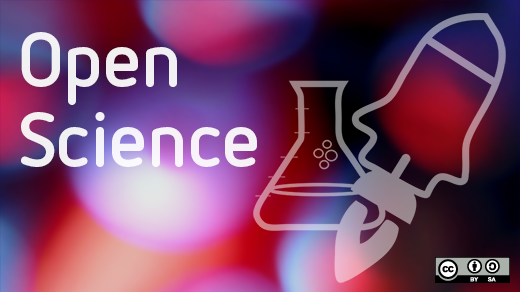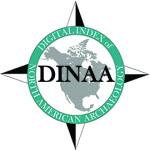The Digital Index of North American Archaeology (DINAA) project is an index of linked open data citations and ontological connections that cross-tabulate the following:
- archaeological site names or identifiers
- culture histories
- artifact typologies
- sociocultural definitions of site use
- practical representations of investigative methods and information qualities
As its base layer, DINAA adapts governmental heritage management datasets for broader open and public uses. DINAA is an exercise in open government data and community data sharing based on open source standards and ethics. DINAA (from construction, through rollout, and into future planning) is an example of how digital is simply the way we do archaeology now, and what that means for us as professionals and social scientists.
DINAA is a multi-institutional partnership between the University of Tennessee, Indiana University South Bend, and the Alexandria Archive Institute, funded by the National Science Foundation (NSF #1216810 & #1217240). Our partners in many State Historic Preservation Offices and/or state archaeology offices have been amazingly enthusiastic and forthcoming in their provision of data to this end. To facilitate the interoperation and reuse of these heterogeneous governmental digital data, DINAA’s workflows, infrastructure, and products emphasize openness and contextual controls.
DINAA’s 2014 goal is to integrate governmentally-curated public data from offline and online digital repositories, representing up to twenty US states, describing over half a million archaeological sites in eastern North America. See Open Context. DINAA promotes broad public extension and reuse by researchers, educators, government officials, and interested stakeholders including indigenous peoples, who may of course cross-cut any and all of the preceding categories. We strive to lower barriers to engagement and will provide direct instruction for any user to incorporate DINAA query results with open source applications like QGIS as GEOJSON files. DINAA involves methodologies and workflows typical of many open science and digital humanities programs. DINAA is meant to be open and participatory, and the long-term goal for the project is stable perpetuation as an open source, community-maintained entity, overseen by a volunteer board and a set of principles likely derived from existing and widely supported models like Creative Commons and the GNU and Open Source Software definitions.
However, in construction and maintenance, the distributed nature of data production related to DINAA, coupled with protections for sensitive data (locational, personal, and cultural), add layers of organizational complexity that can only be resolved by people. Ethically negotiating these issues demands collaboration between stakeholder communities, but the reward is an unprecedented contextualization of the archaeological record of North America across vast regions and time scales. So what kind of anthropology are we today, and how will archaeologists make sense of linked open data?
American anthropology itself has a longstanding experience of very mixed successes with the comprehension of digital life as a subject let alone as practice, and that is indeed where we find ourselves now, as anthropologists reflexively engaged in trying to comprehend the nests and warrens we’ve built on the web and Internet through which we all live. Sociocultural anthropologists are entangled in questions of what constitutes engaging cultural behavior online. How does a person recognize evidence of culture on a screen or through other media delivery? Why does a person feel compelled to participate in a cultural community dissected by space (and perhaps time) but connected through mediated symbols and practices? As archaeologists, we have to answer these questions as they pertain to the culture of our profession, to the broader spectrum of stakeholders who are interested in archaeological information (and may legislate or litigate on account of it), and to data producers and reusers, who must decide what constitutes meaningful data sets for curation and linkage.
An important lesson of DINAA, as a compilation of data products from an unevenly networked community of practice, is that archaeologists are creating digital datasets and reports with inherent anthropological, geographic, and other scientific value in parallel systems that are not even identifiably coherent by humans, let alone software, without expert guidance. Yet within their own contexts, each of the digital datasets that form the DINAA base layer is extremely successful, as a tool to promote local preservation, as resource guides, and for statistical or spatial modeling to meet local obligations. For instance, within one state government dataset used as base data in DINAA, cultural concepts are stored in a series of binary fields, in different offices there are verbose text fields, in still more there are lookup lists of allowable fields. So what can archaeologists do to promote interoperability and open access? What lessons can we draw from the DINAA experience so far?
DINAA maintains the importance of undisclosed locations through its map tiling protocol that assigns archaeological sites to cells that measure 20km on a side (or 400 square kilometers). No site coordinates are ever communicated through DINAA, and in fact they are redacted before the data ever even goes online for editing let alone publication. DINAA demonstrates quite well for American archaeology the interpretive powers of large linked open data sets that can be readily accomplished if we disabuse ourselves of a fetish for coordinates and give primacy to the interpretive value of places. Similarly redacted prior to publication on DINAA are fields that may relate to personal information (landowner names), rediscoverable physiographic features, or culturally sensitive descriptors. (DINAA has opened lines of communication with numerous Tribal Historic Preservation Offices (THPOs) for this purpose, and hopefully to engage interested THPO or other tribal partners with developing indigenous participation in DINAA for the long-term). To put a definitive statement to the question of where the obstacles are to promoting reuse and interoperability: they are within us.
Linked open data, spatial data, and archaeological data are inherently political, contestable, and sensitive, each in their own right and with emergent properties in combination. However, when we recognize that extant and future systems of digital data are human constructs, just as much as are the anthropological data within them, can we frame linkages, openness, and use purposes as behaviors to be negotiated among a community through practice, critique, and education.
See more at Open Context.
Authored by Joshua J. Wells, Eric C. Kansa, Sarah W. Kansa, Stephen J. Yerka, David G. Anderson, Kelsey Noack Myers, R. Carl DeMuth, and Thad Bisset
View the complete collection of stories for Open Science Week.








Comments are closed.